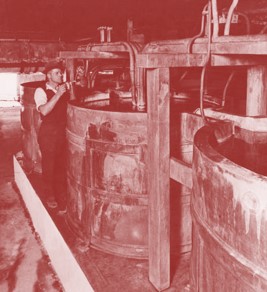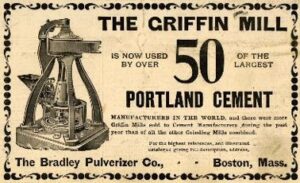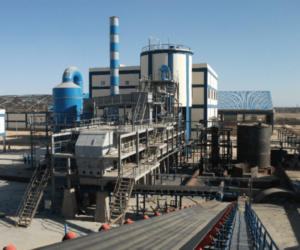Part 2 of a 5-part blog series: “The Bradley Broadfield superphosphate process”
 The Broadfield process has remained a mainstay of the global phosphate industry since its introduction in the 1930s. Ian Hancock, Vice President Sales & Operations, Bradley Pulverizer, explains its continuing success in superphosphate production worldwide. Click Here to download the complete article in pdf format as published by BCInsight Ltd in Fertilizer International Sept|Oct 2022, issue 510, pp. 31-35.
The Broadfield process has remained a mainstay of the global phosphate industry since its introduction in the 1930s. Ian Hancock, Vice President Sales & Operations, Bradley Pulverizer, explains its continuing success in superphosphate production worldwide. Click Here to download the complete article in pdf format as published by BCInsight Ltd in Fertilizer International Sept|Oct 2022, issue 510, pp. 31-35.

The early days of Acidulation
It is well known that crops require a supply of nitrogen, phosphorus and potassium for their sustenance – and that using fertilizers to correctly control the soil’s NPK balance is therefore essential for the long-term sustainability and commercial viability of agriculture.
While phosphorus is abundant in nature, the majority is locked away in insoluble form within crystalline phosphate rock. Indeed, phosphorus in its natural form offers little nutritional benefit to plants, as these can only absorb nutrients from the soil solution. That means there is a need to convert insoluble phosphate rock into plant-available soluble phosphates to support the productivity of global agriculture.
Shortly after Justus von Liebig set out his theories for the acidulation of phosphate for fertilizer manufacturing, John Lawes patented a landmark superphosphate process in 1842 for converting insoluble phosphate rock into calcium phosphate (which is both water and citric soluble). Judged by later standards, the equipment initially developed for Lawes’ acidulation-based method was incredibly crude and far from ideal. To quote Lawes from the original patent, “with 4 common farm labourers and 2 cast iron pans I have mixed 2 tonnes in a day” in an open pile.

Early advertisement for the Bradley Griffin Mill
The process did improve subsequently, with ground phosphate being thrown into a stream of acid running into a brick lined pit. This was agitated by men standing around with rakes – which, understandably, was a thoroughly miserable job. Early mechanical manufacturing was also limited to batch production performed by a variety of different machines.
William Bradley became the first US manufacturer of single superphosphate in 1873 when he started production at the Bradley Fertilizer works in North Weymouth, Massachusetts. In 1886, his son, Peter Bradley, established the Bradley Pulverizer Company, to provide grinding and acidulating equipment for the fertilizer industry and general sale.
Then, in 1936, Bradley applied its 50+ years of experience in manufacturing equipment to the fertilizer industry by developing the Broadfield process, the first turnkey continuous superphosphate processing machine known as the Broadfield Den. Bradley’s long association with the fertilizer industry continues to this day with installations producing up to 100 tons/hour (a far cry from manually mixing acid with rock in an open pit).

Present day Broadfield Den
Continue to Part 3 – Making Single Superphosphate (SSP) and Triple Superphosphate (TSP) in Broadfield Process Units
Back to Part 1 – Introduction to the Bradley Broadfield Superphosphate Process
Contact Us to discuss your SSP, TSP, or other superphosphate requirements and we’ll develop the right solution to meet your needs.
(US) 855-670-8777 | (International) 44-0808-196-8141
